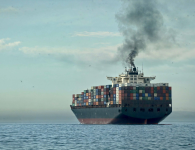Resources
317 Resources for
October 29, 2024
Citysphere

October 16, 2024
Resilient Clean Energy Supply Chain

October 6, 2024
Just Transition

September 29, 2024
Low-carbon transport

September 29, 2024
Sustainable Building

September 26, 2024
International Cooperation and Communication

September 26, 2024
Climate Mitigation

September 10, 2024
Sustainable Transition Center










